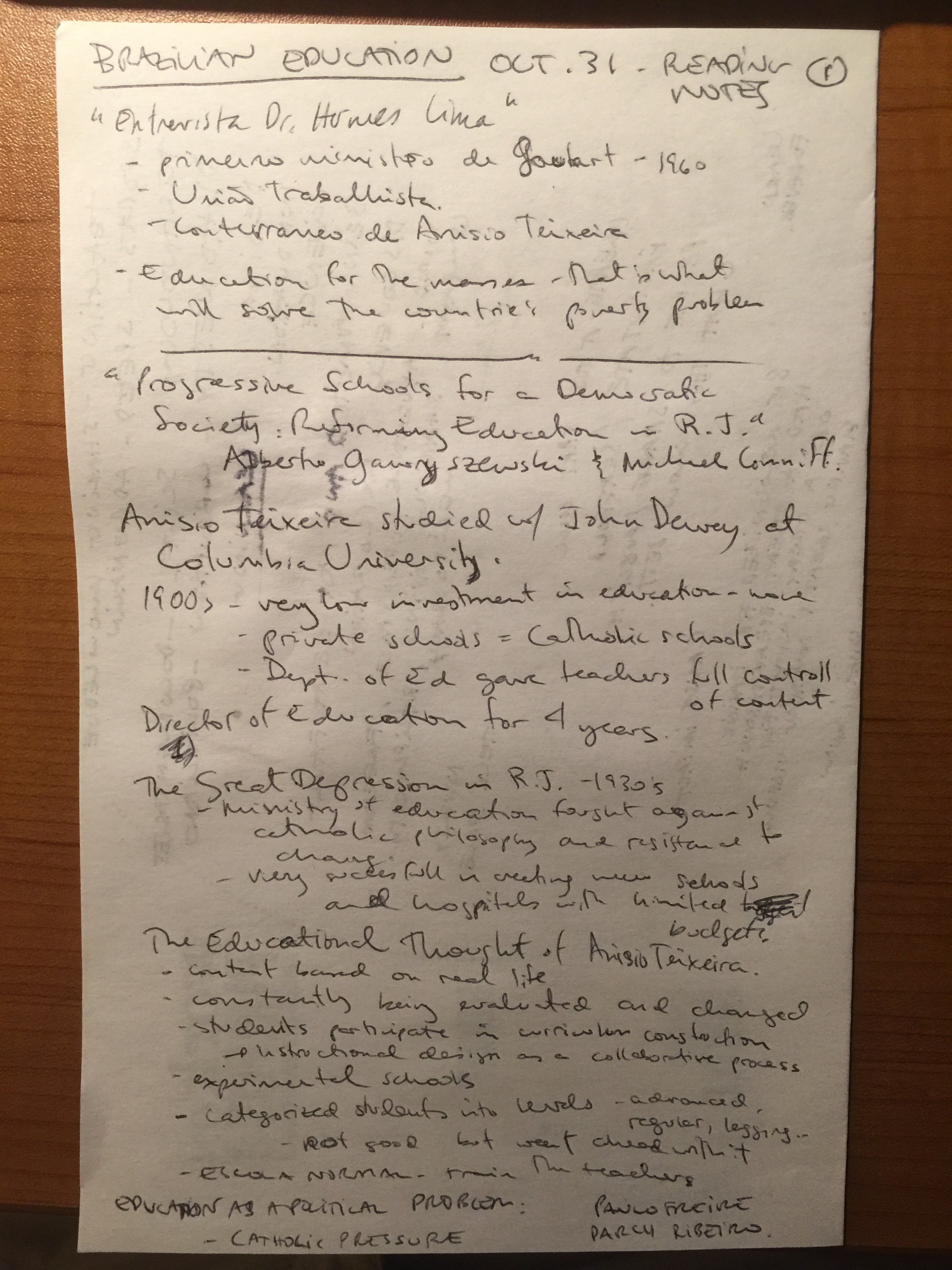Reuben came over to talk about our Learning Problems – very productive talk that guided us further down the rabbit hole : )
Started a new document to gather my thoughts on a possible masters project.
This is what I’ve got so far:
Problem Statement
Communities, companies and countries have to be able to share knowledge and educate their peers in order to thrive. The traditional methods of doing so are through books, talks, documentaries, and interviews. We want to learn from the best, understand how they do it and be more like them. But sometimes we just want to talk to someone, interact with them – learn from a human being – even if it is not the expert – maybe even better if it is someone who speaks more like I do. How can technology enable this?
Research Question
How might we scaffold “experts” to create engaging hybrid courses?
Keywords
- Hybrid Online Learning
- Instructional Design
- Train the Trainer
- Professional Development
- TPCK
- TPACK
Thoughts
- how to extract value from experts
- how to identify what an expert knows that is of interest
- how to ask for knowledge from an expert
- time based courses are the ones that perform better
- TMS – Teaching Management System
- Manage/meet expectations of stakeholders e.g. school owner then students
Experts
- Candace Marie-Thille
- Anna Proteus
- Sarah Rutheford-Quach
- Karin Forsell
To Research
- Evidence Based Learning
- Hebert Simon
- Professional Development: look at Jeff Zwier’s work: http://www.jeffzwiers.org
- Jonathan Osborne: course design and interaction.
- Technology Integration Planning Model ( Robyler, 2006)
- Systematic ICT Integration Model ( Wang & ve Woo, 2007)
- Apple Future Classes Model (Dwyer, Ringstaff, Sandholtz & Apple Computer Inc., 1990)
- Social Model (Wang, 2008)
- Enhanced Pearson Model (Woodbridge, 2004)
- Technological Pedagogical Content Knowledge [TPACK] model (Koehler & Mishra, 2005). Koehler and Mishra (2005)
References
“While students rated the instructors very positively, the results also indicate that instructors still need to have their roles transformed pedagogically, socially, and technologically if they are to establish a more engaging and fruitful environment for online learning.” – Liu, X., Lee, S., Bonk, C., Su, B., Magjuka, R. (2005). Exploring Four Dimensions of Online Instructor Roles: A Program Level Case Study. Online Learning Consortium http://onlinelearningconsortium.org/sites/default/files/v9n4_liu_1.pdf
“This study found a change in the beliefs and teaching presence of the instructors from their initial resistance to online teaching to an approach which is mindful of the student experience and promotes a dialogical approach to online learning.” – Redmond, P., (2011) From face-to-face teaching to online teaching: Pedagogical transitions. ascilite 2011 Hobart: http://www.ascilite.org/conferences/hobart11/downloads/papers/Redmond-full.pdf
“In spite of the proliferation of online learning, creating online courses can still evoke a good deal of frustration, negativity, and wariness in those who need to create them.” – Vai, M. & Sosulski, K. (2015). Essentials of Online Course Design. A Standards-Based Guide, 2nd Edition. Routledge https://www.routledge.com/products/9781138780163
“Technology alone does nothing to enhance online pedagogy. According to Jacobsen, et al. (2002), the real challenge is to “develop fluency with teaching and learning with technology, not just with technology, itself” (p.44).” – Keengwe, J. & Kidd, T. (2010). Towards Best Practices in Online Learning and Teaching in Higher Education. MERLOT Journal of Online Learning and Teaching http://jolt.merlot.org/vol6no2/keengwe_0610.htm
TO REVIEW
Essentials of Online Course Design https://www.routledge.com/products/9781138780163
Towards Best Practices in Online Learning and Teaching in Higher Education http://jolt.merlot.org/vol6no2/keengwe_0610.htm
EXPLORING FOUR DIMENSIONS OF ONLINE INSTRUCTOR ROLES: A PROGRAM LEVEL CASE STUDY https://www.google.com/url?sa=t&rct=j&q=&esrc=s&source=web&cd=1&cad=rja&uact=8&ved=0CB4QFjAAahUKEwjQ4te54tfIAhUL1GMKHcGSCxA&url=http%3A%2F%2Fonlinelearningconsortium.org%2Fsites%2Fdefault%2Ffiles%2Fv9n4_liu_1.pdf&usg=AFQjCNHtnYf76HkFI-YrIcLhxBWoNPXhRw&sig2=RQVCKYoBJvqv-Gtu8oyCdw
(MY) THREE PRINCIPLES OF EFFECTIVE ONLINE PEDAGOGY http://files.eric.ed.gov/fulltext/EJ909855.pdf
Source Effects in Online Education http://research.microsoft.com/en-us/um/people/thies/las15-source-effects.pdf
The Five stage Model http://www.gillysalmon.com/five-stage-model.html
From face-to-face teaching to online teaching: Pedagogical transitions http://www.ascilite.org/conferences/hobart11/downloads/papers/Redmond-full.pdf
From On-Ground to Online: Moving Senior Faculty to the Distance Learning Classroom http://er.educause.edu/articles/2017/6/from-onground-to-online-moving-senior-faculty-to-the-distance-learning-classroom
Why some distance education programs fail while others succeed in a global environment http://www.sciencedirect.com/science/article/pii/S1096751609000281
Case Study: Challenges and Issues in Teaching Fully Online Mechanical Engineering Courses http://link.springer.com/chapter/10.1007/978-3-319-06764-3_74
TPCK and SAMR – Models for Enhancing Technology Integration (2008) http://www.msad54.org/sahs/TechInteg/mlti/SAMR.pdf
SAMR and TPCK in Action http://www.hippasus.com/rrpweblog/archives/2017/08/28/SAMR_TPCK_In_Action.pdf
SAMR: Beyond the Basics http://www.hippasus.com/rrpweblog/archives/2017/08/26/SAMRBeyondTheBasics.pdf
From the Classroom to the Keyboard: How Seven Teachers Created Their Online Teacher Identities http://www.irrodl.org/index.php/irrodl/article/download/1814/3253
A structure equation model among factors of teachers’ technology integration practice and their TPCK http://www.sciencedirect.com/science/article/pii/S0360131515000949
Examining Technopedagogical Knowledge Competencies of Teachers in Terms of Some Variables http://www.sciencedirect.com/science/article/pii/S1877042815006990/pdf?md5=1d1ccf6d1fb7088d7fda105f66d677c6&pid=1-s2.0-S1877042815006990-main.pdf
The Technological Pedagogical Content Knowledge-practical (TPACK-Practical) model: Examination of its validity in the Turkish culture via structural equation modeling http://www.sciencedirect.com/science/article/pii/S0360131515001189
Using TPCK as a scaffold to self-assess the novice online teaching experience http://www.tandfonline.com/doi/abs/10.1080/01587919.2015.1019964#aHR0cDovL3d3dy50YW5kZm9ubGluZS5jb20vZG9pL3BkZi8xMC4xMDgwLzAxNTg3OTE5LjIwMTUuMTAxOTk2NEBAQDA=
What Is Technological Pedagogical Content Knowledge? http://www.editlib.org/p/29544/
The role of TPACK in physics classroom: case studies of preservice physics teachers http://ac.els-cdn.com/S187704281201779X/1-s2.0-S187704281201779X-main.pdf?_tid=cf1faf84-81bf-11e5-8938-00000aacb35f&acdnat=1446509831_08753d5dcf76ed3f790bd4382aae1e31
Handbook of Technological Pedagogical Content Knowledge (TPCK) for Educators https://books.google.com/books?hl=en&lr=&id=lEbJAwAAQBAJ&oi=fnd&pg=PP1&dq=tPCK&ots=-p0TWk4RCI&sig=FElDYqBq7xyKcFWehvVRZ91LrNE#v=onepage&q&f=false
When using technology isn׳t enough: A comparison of high school civics teachers׳ TPCK in one-to-one laptop environments http://www.sciencedirect.com/science/article/pii/S0885985X14000229
Systematic Planning for ICT Integration in Topic Learning http://ifets.info/journals/10_1/14.pdf
What Is Technological Pedagogical Content Knowledge http://www.citejournal.org/articles/v9i1general1.pdf
$ RESEARCH PAPERS
Effect of a TPCK-SRL Model on Teachers’ Pedagogical Beliefs, Self-Efficacy, and Technology-Based Lesson Design http://link.springer.com/chapter/10.1007/978-1-4899-8080-9_5
Technological Pedagogical Content Knowledge as a Framework for Integrating Educational Technology in the Teaching of Computer Science http://link.springer.com/chapter/10.1007/978-1-4899-8080-9_11
Instruction: A Models Approach, Enhanced Pearson http://www.pearsonhighered.com/educator/product/Instruction-A-Models-Approach-Enhanced-Pearson-eText-with-LooseLeaf-Version-Access-Card-Package/9780134046884.page
OTHER RESOURCES











